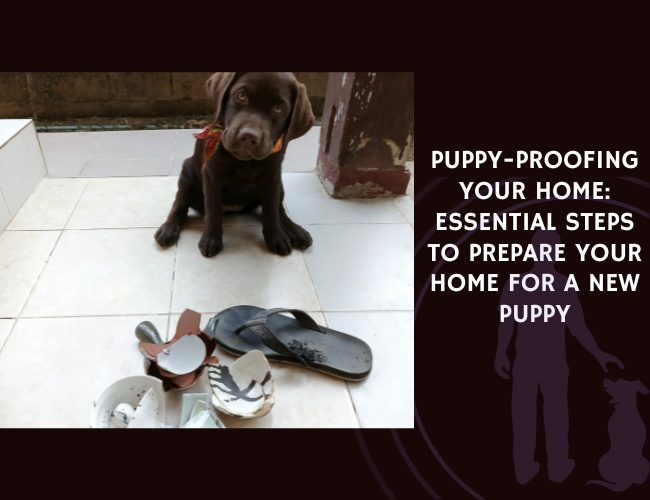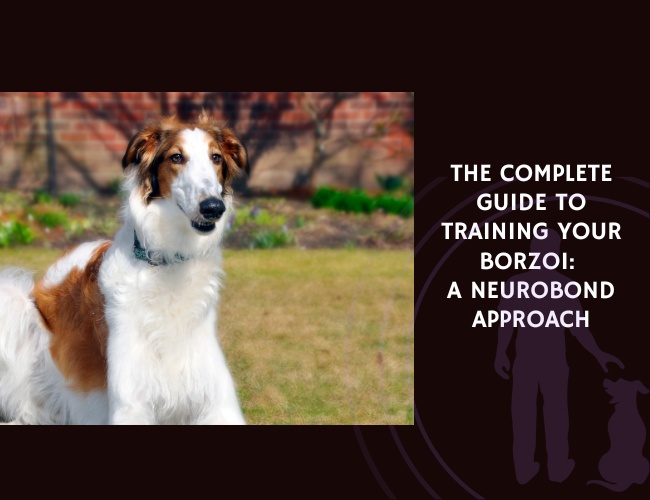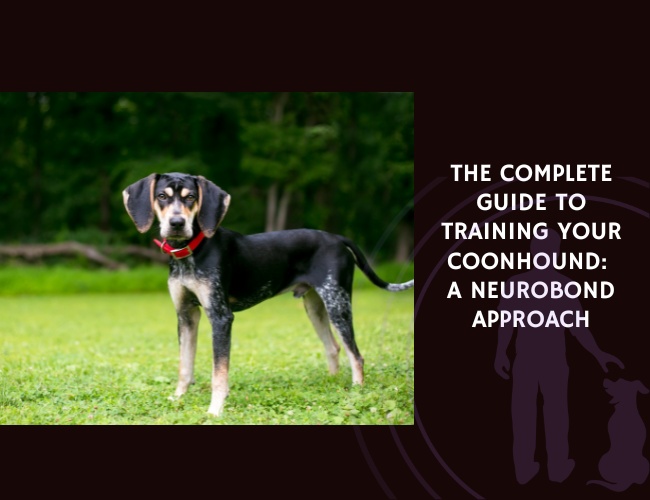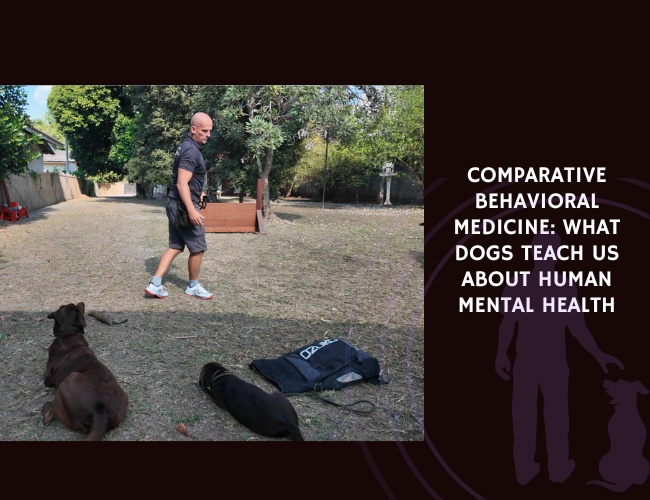Understanding the Importance of Puppy-Proofing
Safety Considerations for Naturally Curious Puppies
Puppies are renowned for their curiosity. They love to explore new spaces, sniff out interesting objects, and, of course, chew on almost anything they can find. This natural inquisitiveness, while endearing, can also lead to dangerous situations. Puppies might chew on electrical cords, swallow small items, or come into contact with toxic substances. It’s vital to ensure their environment is devoid of such hazards to prevent accidents and injuries.
One way to approach puppy-proofing is by viewing your home from a puppy’s perspective. This involves getting down to their level to identify and mitigate potential risks that you might not notice from an adult height. By doing so, you can proactively prevent harm and create a safer living space for your new furry friend.
Preventing Damage to Household Items
Puppies are not just curious but also teething, which means they will chew on almost anything to relieve their discomfort. This natural instinct can lead to considerable damage in your home, from chewed furniture to destroyed shoes and shredded pillows. Establishing a puppy-proof environment can minimize the risk of such destructive behaviors.
Securing electrical cords and keeping valuable items out of reach are crucial steps. You might also consider using deterrent sprays on furniture or providing an abundance of chew toys to redirect their chewing behavior. This proactive approach can save you from costly repairs and ensure your precious items remain intact.
Establishing Clear Boundaries for Effective Training
A key component of puppy-proofing is setting clear boundaries for your new pet. Puppies need to understand which areas are off-limits and where they are allowed to roam freely. Creating designated zones within your home can significantly aid in their training.
Use baby gates to restrict access to certain rooms or spaces with potential hazards. This not only helps in keeping your puppy safe but also reinforces good behavior. Providing a specific puppy zone equipped with essentials like a comfortable bed, water bowl, and appropriate toys offers a secure place for them to play and relax. By establishing these clear boundaries, you help your puppy understand their environment and what is expected of them.
Puppy-proofing your home is more than just removing hazardous items; it’s about creating a structured, secure, and nurturing environment for your new pet. By taking these preparatory steps, you can ensure a smoother transition for your puppy into their new home, fostering a space where they can explore safely, play without causing damage, and learn how to behave in their new surroundings.
Up next, we will delve into the basic principles of puppy-proofing, offering practical advice on how to assess potential hazards and create safe zones within your home.
Basic Principles of Puppy-Proofing
Bringing a new puppy into your home is an exciting experience, but it also requires careful preparation to ensure their safety and well-being. Puppy-proofing involves viewing your home from your puppy’s perspective and taking proactive steps to create a secure environment.
Assessing Hazards from a Puppy’s Perspective
The first step in puppy-proofing is to see the world through your puppy’s eyes. Puppies are curious creatures who explore their surroundings with their mouths and little paws. To understand potential hazards, get down to their level. Crawling on your hands and knees helps you identify dangers that you might overlook from your usual vantage point. Look for items within reach that could be tempting chew toys or pose choking risks.
Identifying and Eliminating Dangerous Items and Areas
Once you’ve assessed potential hazards, it’s time to eliminate or secure them:
- Remove Small Objects: Items like coins, rubber bands, and small toys can pose choking hazards. Ensure these are kept out of your puppy’s reach.
- Secure Heavy Objects: Ensure that heavy items that could be knocked over, such as books on low shelves, are secured or moved to higher locations.
- Block Access to Hazards: Use baby gates or other barriers to prevent your puppy from accessing areas like the kitchen or bathroom where hazardous materials are often stored.
Creating Designated Safe Spaces for Play and Relaxation
Creating a designated safe space for your puppy is crucial for their comfort and training. This area will serve as their sanctuary where they can play, relax, and feel secure.
- Choose a Safe Area: Select a space with easy-to-clean floors, like a kitchen or laundry room. This area should be free from wires, sharp objects, and other hazards.
- Add Essentials: Equip the space with a comfortable bed, water bowl, and appropriate chew toys to keep them occupied and happy.
- Use Playpens: Initially, confine your puppy to this area to keep them safe and help them gradually adjust to their new home.
Puppy-proofing is an ongoing process as your puppy grows and develops new abilities. Regularly reassess your home and adjust safety measures to accommodate your puppy’s growth. Implementing these basic principles ensures a safer environment for your puppy and gives you peace of mind knowing they’ve started their new life in a secure and welcoming home.
Securing Hazardous Items and Areas
When you bring a new puppy into your home, it’s crucial to secure any potentially hazardous items or areas. Puppies are naturally curious and love to explore, so addressing these risks early on can save you from a lot of stress and potential dangers.
Protecting Electrical Cords and Outlets
One of the first steps in puppy-proofing your home is to secure electrical cords and outlets. Puppies love to chew, and electrical cords can be a dangerous temptation. To protect them:
- Bundle and cover cords: Use cord protectors or tubing to prevent your puppy from chewing on them.
- Block access to outlets: Use safety covers to keep curious mouths from poking into electrical outlets.
These measures ensure that your puppy won’t get into potentially life-threatening situations involving electricity.
Storing Toxic Substances Safely
Many household items, such as cleaning products and medications, can be toxic to puppies. It’s essential to store these items safely:
- Identify toxic items: Secure any cleaning products, medications, and human food that could be harmful to your pup, such as chocolate and grapes.
- Store safely: Keep these items in high cabinets or locked areas where your puppy cannot access them.
This easy step can prevent accidental poisoning and ensures your puppy stays safe from harmful substances.
Managing Trash and Food Storage
Your trash can and food storage areas are other potential hazards for your puppy. Puppies can knock over bins, consume food that’s bad for them, or ingest small objects that can cause harm. Here’s what you can do:
- Dog-proof trash cans: Use cans with secure lids to prevent your puppy from getting into the trash.
- Store food properly: Keep food off counters and store them in sealed containers to avoid attracting your dog.
Taking care of your trash and food storage in this way will help keep your home clean and safe for your new puppy.
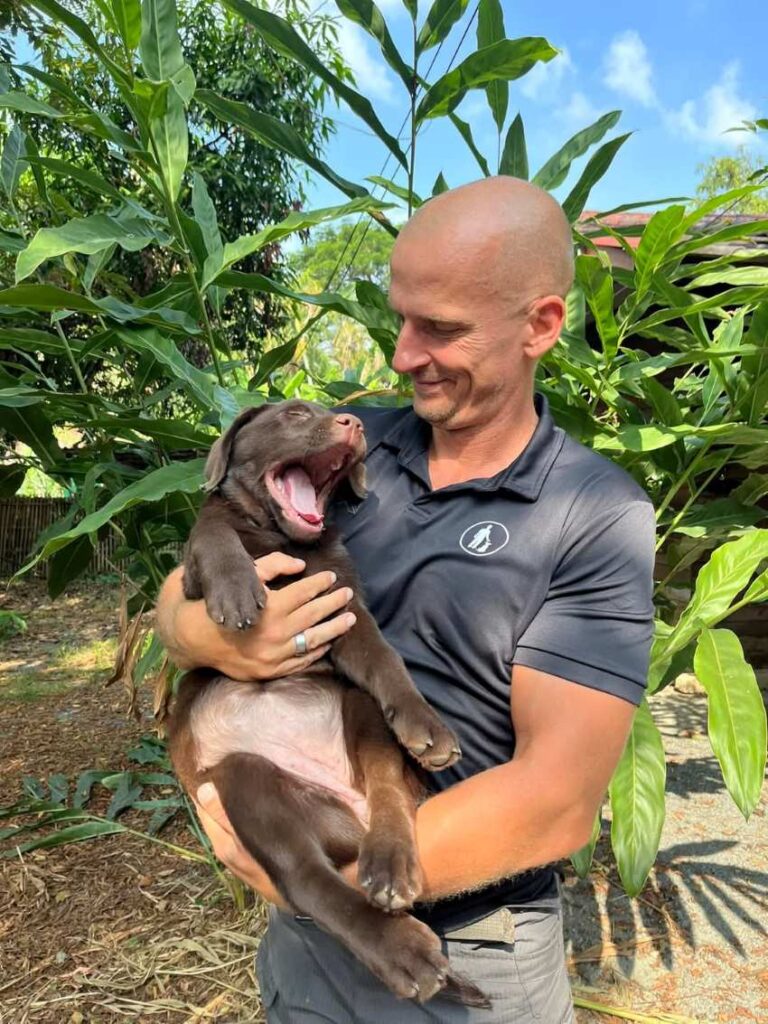
A Brief Transition to the Next Topic
With hazardous items and areas secured, you can now focus on creating defined barriers in your home. This will help to keep your puppy safe and to establish areas where they are free to explore. Establishing these boundaries ensures a structured and safe environment for the new member of your family.
Creating Safe Boundaries
Ensuring your home is appropriately sectioned off for your new puppy is crucial for their safety and your peace of mind. This chapter will guide you through installing safety gates, securing doors and windows, and preparing a designated puppy zone.
Installing Safety Gates
Safety gates are essential for restricting your puppy’s access to hazardous areas like stairs, kitchens, or rooms filled with fragile items. Here’s how to effectively use them:
- Choose the Right Gate: Opt for sturdy gates designed for pets. Ensure the gate is tall enough to prevent your puppy from jumping over, which is particularly important for active breeds.
- Strategic Placement: Install gates at the top and bottom of stairs to prevent accidental falls. Use gates to block off rooms with potential hazards, such as the kitchen or bathroom.
- Secure Installation: Make sure the gates are firmly secured to door frames or walls. A loosely fitted gate can easily be knocked over, leading to accidents.
By using safety gates, you create physical barriers that help keep your puppy safe from areas filled with potential dangers.
Securing Doors and Windows
A curious puppy might accidentally close a door or try to push through unsecured windows. To prevent such mishaps:
- Install Door Stoppers: Use door stoppers to prevent doors from slamming shut. This helps avoid the risk of your puppy getting locked in a room or injured by a closing door.
- Secure Windows: Ensure windows are locked at all times. If you prefer having windows open, install protective screens to prevent your puppy from falling out. Regularly check these screens for any signs of wear or damage.
Securing doors and windows is an essential step in puppy-proofing, as it prevents accidental injuries and ensures your puppy stays within safe indoor spaces.
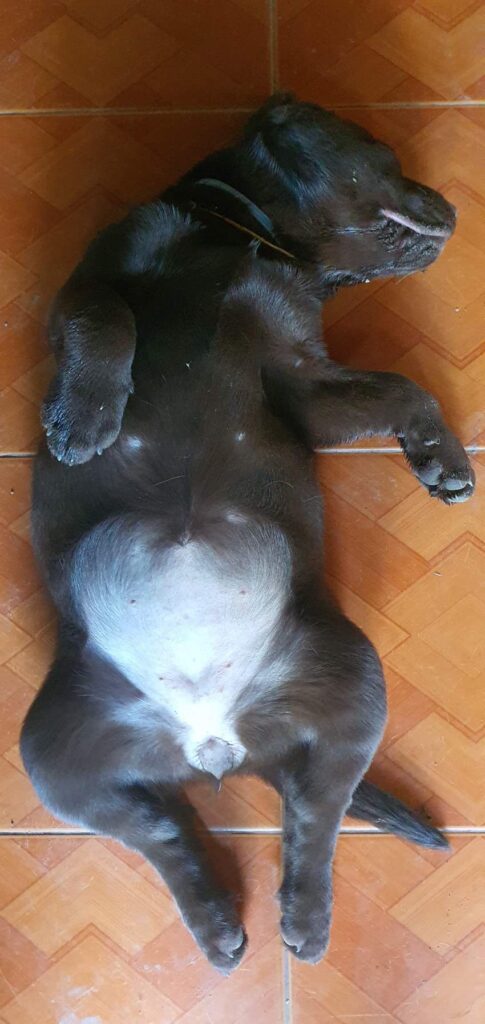
Preparing a Designated Puppy Zone
Creating a designated “puppy zone” is a great way to provide a safe and controlled environment for your new furry friend. Here’s how you can set it up:
- Select a Safe Area: Choose a room with easy-to-clean floors and minimal hazards. A laundry room, spare bedroom, or a sectioned-off area of the living room are good options.
- Include Essentials:
- Bed: Provide a comfortable bed for your puppy to rest.
- Water Bowl: Ensure fresh water is always accessible.
- Chew Toys: Place a variety of durable chew toys to keep your puppy entertained and help prevent destructive chewing.
By preparing a designated puppy zone, you create a comforting space where your puppy can play and relax safely.
Establishing clear boundaries within your home is key to creating a safe and structured environment for your puppy. As you set up these boundaries, remember to regularly adjust them based on your puppy’s growth and development. Effective boundary setting not only ensures safety but also aids in their training and development.
Outdoor Safety Measures
Creating a safe outdoor environment is just as essential as indoor puppy-proofing. Curiosity can lead puppies to explore every nook and cranny, potentially leading them into dangerous situations.
Checking Fences for Gaps and Weak Points
Ensuring that your yard is securely enclosed is vital for keeping your puppy safe. Here’s how you can do it:
- Inspect Your Fence: Thoroughly examine your fence for any gaps, holes, or weak points that a small puppy might squeeze through or dig under. Patching up any vulnerabilities is a priority.
- Reinforce Weak Points: Use chicken wire or similar materials to reinforce the bottom of the fence to prevent your puppy from digging out.
- Height Considerations: Ensure that the fence is high enough to contain your pup, particularly if you have a breed known for jumping or climbing. Taller fences can prevent escape attempts as your puppy grows bigger and more agile.
Removing Toxic Plants and Sharp Objects from the Yard
Next, make sure your yard is free from any hazardous substances that could harm your puppy. Puppies often use their mouths to explore, which means they might chew on or ingest dangerous items if you’re not careful.
- Identify Toxic Plants:
- Evaluate your garden for plants that are toxic to dogs, such as azaleas, oleanders, and tulips.
- Remove or securely fence off access to these plants. If removal is not feasible, consider placing barriers around them.
- Clear Sharp Objects:
- Regularly scan your yard for sharp objects like broken glass, nails, or other debris that could injure your puppy.
- Collect and dispose of these hazards promptly to ensure a scrape-free and paw-friendly play area.
Implementing Breed-Specific Safety Considerations
Different breeds have varying needs and tendencies, and tailoring your safety measures to match these can significantly enhance your puppy’s security.
- For Active or Agile Breeds:
- High-energy breeds like Border Collies or German Shepherds may require taller barriers and more robust containment methods, like latching gates and fences.
- Provide ample mental and physical stimulation through exercise and interactive play to deter escape attempts driven by boredom.
- For Small Breeds:
- Ensure that any gaps or spaces in your fencing are narrow enough to prevent smaller puppies, such as Chihuahuas or Dachshunds, from squeezing through.
- Carefully inspect the perimeter from their perspective to find and close any potential exits.
Outdoor safety measures extend beyond mere prevention; they create an environment for secure and joyful exploration. This groundwork helps establish trust and safe behavior as your puppy grows.
With these steps, you’re well on the way to crafting an outdoor haven where your puppy can explore and play safely.
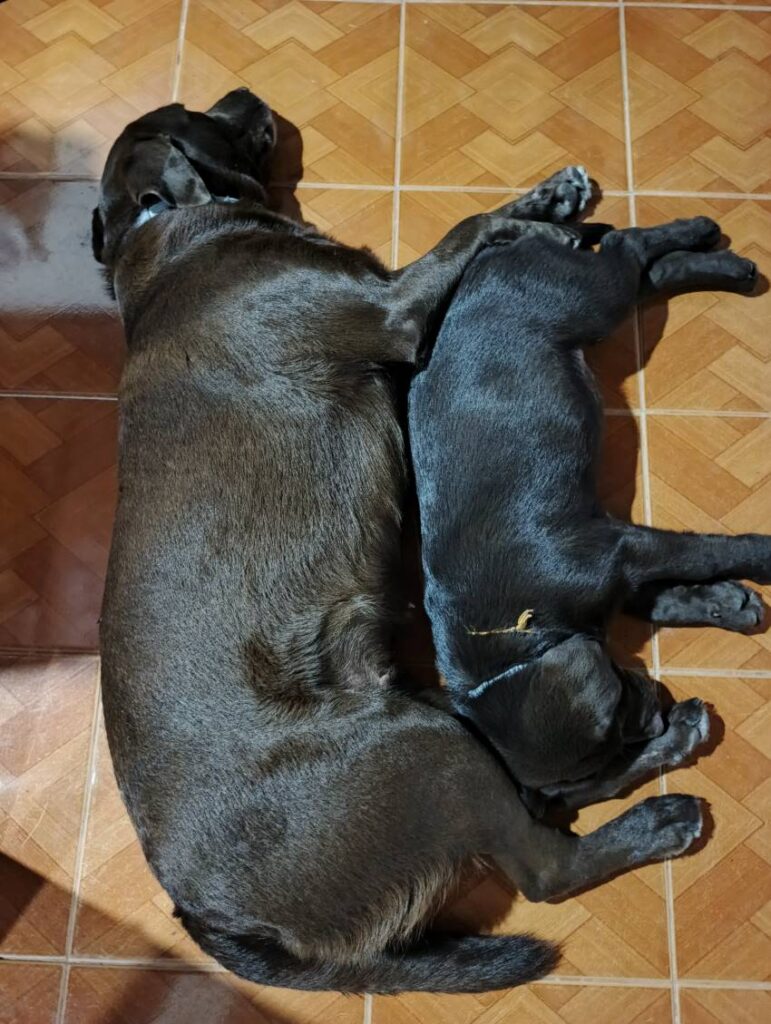
Puppy-Proofing House Checklist
General Safety
- Secure Trash Cans:
- Use locking lids or place trash bins in areas inaccessible to your puppy.
- Avoid placing trash near their play or eating areas.
- Manage Electrical Cords and Cables:
- Use cord covers to conceal exposed wires.
- Remove dangling cords to prevent chewing.
- Store Medications and Chemicals Safely:
- Keep medications, cleaning products, and other chemicals in high cabinets or locked areas.
- Check for items like antifreeze in the garage or laundry detergents that may be accessible.
- Remove Toxic Plants:
- Research common toxic houseplants (e.g., pothos, lilies, aloe).
- Remove them or place them out of reach.
- Safeguard Elevated Spaces:
- Install barriers on balconies, decks, and stairs.
- Use baby gates to prevent access to unsafe areas.
- Secure Small Objects:
- Remove small items like coins, buttons, rubber bands, and batteries.
- Regularly inspect floors for stray objects your puppy might chew or swallow.
Living Room and Furniture
- Protect Furniture:
- Use furniture covers or pet-safe sprays to discourage chewing.
- Block access to furniture legs if your puppy is teething.
- Secure Heavy Items:
- Anchor heavy furniture and appliances to prevent them from tipping over if nudged.
- Ensure lamps and vases are stable and out of reach.
- Check for Hidden Hazards:
- Inspect under couches and furniture for small items or wires your puppy might find.
Kitchen and Dining Area
- Keep Food Out of Reach:
- Store food in secure cabinets, especially chocolate, grapes, and other toxic items.
- Use childproof latches for lower cabinets.
- Cover Stove Knobs:
- Prevent accidental turning of knobs by using knob covers or removing knobs when not in use.
- Secure Garbage Disposal and Dishwasher:
- Close dishwasher doors tightly and use childproof locks if necessary.
- Avoid leaving sharp objects like knives in the sink or dishwasher.
Bedroom
- Store Personal Items:
- Keep jewelry, makeup, and toiletries out of reach.
- Ensure laundry is put away to avoid your puppy chewing socks or undergarments.
- Inspect Bed Area:
- Prevent access to under-bed spaces if items like shoes or wires are stored there.
Bathroom
- Close Toilet Lids:
- Prevent your puppy from drinking or falling into the toilet.
- Secure Personal Care Products:
- Keep shampoos, razors, and medications in cabinets or drawers.
- Use non-slip mats to prevent accidents on wet floors.
Outdoor Areas
- Inspect Fencing and Gates:
- Ensure there are no gaps or weak spots in your fence.
- Use puppy-safe latches to secure gates.
- Remove Toxic Plants Outdoors:
- Check for outdoor plants like azaleas, sago palms, and oleander.
- Eliminate Standing Water:
- Avoid access to puddles, pools, or fountains where your puppy might drink dirty water.
- Secure Tools and Chemicals:
- Store gardening tools, fertilizers, and pesticides in a locked shed or garage.
Puppy-Specific Areas
- Designate Puppy Zones:
- Use baby gates or playpens to create safe areas for your puppy.
- Include bedding, toys, and water in these zones.
- Provide Chew Toys:
- Offer safe, durable chew toys to discourage destructive behavior.
- Create Consistent Routines:
- Establish regular feeding, play, and sleep schedules.
- Use these routines to reinforce potty training and boundaries.
Additional Tips
- Keep Emergency Contacts Handy:
- Include your veterinarian’s contact information and a poison control hotline.
- Use Non-Toxic Cleaning Products:
- Choose pet-safe cleaning supplies for floors and furniture.
- Monitor Regularly:
- Perform periodic checks to ensure no new hazards have appeared.
- Adjust your setup as your puppy grows and explores new areas.
Training and Supervision
Training and supervision are crucial to ensure your puppy grows into a well-behaved and safe adult dog. This chapter will explore supervised exploration techniques, the importance of using positive reinforcement for boundary training, and how to provide appropriate chew toys and alternatives to keep your puppy engaged and safe.
Implementing Supervised Exploration Techniques
Supervised exploration allows your puppy to become familiar with their new environment under your watchful eye. This technique involves letting your puppy explore different areas of your home while you monitor their behavior closely. By staying nearby, you can quickly intervene if they approach something dangerous or start to chew on furniture.
- Gradual Introduction: Begin by allowing your puppy to explore one room at a time. Slowly increase the number of rooms as they become more comfortable and demonstrate good behavior.
- Close Monitoring: Stay close to your puppy to prevent accidents. This is especially important during the first few weeks when everything is new to them.
- Immediate Redirection: If your puppy starts to chew on something they shouldn’t, immediately offer a suitable alternative, like a chew toy, and praise them when they take it.
Using Positive Reinforcement for Boundary Training
Positive reinforcement is a highly effective training method that involves rewarding your puppy for good behavior. It helps establish clear boundaries and encourages your puppy to follow rules without fear or anxiety.
- Rewards: Use treats, praise, or toys to reward your puppy when they stay within allowed areas or follow commands. Select rewards that your puppy loves to increase their motivation.
- Consistency: Be consistent with your training. Ensure everyone in the household follows the same rules and guidelines to avoid confusing your puppy.
- Patience: Positive reinforcement takes time and patience. Regularly praise good behavior and gently correct mistakes to build lasting habits.
Providing Appropriate Chew Toys and Alternatives
Puppies have a natural instinct to chew, which helps them explore their surroundings and soothe their gums while teething. Providing appropriate chew toys and alternatives can prevent destructive behavior and keep your household items safe.
- Safe Toys: Select durable toys specifically designed for puppies. Avoid toys with small parts that could be a choking hazard.
- Variety: Offer a variety of toys to keep your puppy engaged. Rotate toys periodically to maintain their interest.
- Supervision: Always supervise your puppy while they play with toys, especially during the initial stages. This prevents accidents and allows you to assess which toys are safest and most enjoyable for your puppy.
As you continue to train and supervise your puppy, remember that patience and consistency are key. By implementing these techniques, you’ll help your puppy learn about their environment, build good habits, and feel safe under your care. Stay vigilant and adaptable, continually assessing and modifying training approaches to suit your puppy’s growing needs.
Ongoing Safety Management
Once your home is initially puppy-proofed, it’s important to remember that safety management is an ongoing process. As your puppy grows and becomes more curious and capable, the safety measures you set up need to evolve too. This chapter covers how to maintain and update your safety practices over time.
Conducting Regular Safety Checks
Puppies grow quickly, and a small, safe environment can turn into a hazardous playground as they become more adventurous. To keep up with your puppy’s development, conduct regular safety assessments.
- Frequent Inspections: Set a routine for checking your home for new hazards. This can be weekly or bi-weekly, depending on the puppy’s age and activity level.
- Assess from Puppy’s Level: Continue to get down to your puppy’s eye level to discover potential risks that might not be apparent from an adult’s perspective. Look for small objects, sharp edges, and enticing chew items.
- Update Hazard List: Keep a checklist of previously identified hazards and add any new ones. This list will help you stay organized and consistent in your safety efforts.
Adjusting Safety Measures Based on Puppy’s Development
Puppies change and grow at an astonishing rate, so your safety measures need to adjust accordingly.
- Higher Gates for Jumpers: If your puppy starts jumping or climbing over baby gates, you’ll need taller barriers to keep them out of restricted areas.
- Enhanced Locks: As puppies grow stronger, they might figure out how to open doors or gates. Upgrade to more secure locking mechanisms if necessary.
- Rearranged Storage: Higher shelves and cabinets might become accessible as your puppy grows. Store hazardous items even higher or use child-proof locks to prevent access.
Maintaining Consistent Training and Supervision Routines
Ongoing training and supervision are crucial for reinforcing good behavior and ensuring a safe environment.
- Supervised Exploration: Always allow your puppy to explore new areas under supervision. Gradually introduce them to different parts of the home, observing their actions and reactions.
- Positive Reinforcement: Use treats and praise to reinforce good behavior and boundaries. Consistency is key. Reward your puppy immediately to make clear connections between behavior and consequence.
- Chew Toys and Alternatives: Continuously provide appropriate chew toys and alternatives. As puppies get older, their chewing needs might change. Regularly inspect toys for wear and tear and replace them to avoid potential choking hazards.
Regularly updating your safety protocols and maintaining consistent training practices will help create a secure and harmonious home for your puppy. This lays the groundwork for a healthy transition to adulthood within a safe environment.
Summary
Puppy-proofing your home is essential to ensure the safety of your new puppy. Puppies are naturally curious and prone to chewing on anything they can find, which can lead to accidents and injuries. By viewing your home from a puppy’s perspective and getting down to their level, you can identify and mitigate potential risks. Additionally, puppy-proofing helps prevent damage to household items by securing cords and keeping valuables out of reach. Establishing clear boundaries and designated zones within your home also aids in effective training. Overall, puppy-proofing creates a structured and nurturing environment for your new furry friend. The text provides advice on how to puppy-proof your home to ensure the safety and well-being of your new pet. It suggests assessing potential hazards from a puppy’s perspective and eliminating or securing dangerous items and areas. It also emphasizes the importance of creating a designated safe space for play and relaxation. The text provides tips on how to puppy-proof your home to ensure the safety and well-being of your new pet. It suggests securing electrical cords and outlets, storing toxic substances safely, and managing trash and food storage.
Regularly reassessing and adjusting safety measures is important as the puppy grows and develops. By implementing these measures, you can create a secure and welcoming environment for your puppy. This text provides guidelines for creating a safe environment for a new puppy in your home. It emphasizes the importance of securing hazardous items, storing food properly, and creating defined barriers. The text also provides instructions for installing safety gates, securing doors and windows, and establishing a designated puppy zone. These measures help prevent accidents and ensure the puppy’s safety. The text provides tips on creating a designated “puppy zone” Indoors and ensuring outdoor safety for puppies. It suggests selecting a safe area with essential items such as a bed, water bowl, and chew toys for the puppy. It also advises checking fences for gaps and reinforcing weak points to prevent escape. Additionally, it recommends removing toxic plants and sharp objects from the yard to ensure the puppy’s safety.

The text provides guidelines for puppy-proofing both the outdoor area and the house to ensure the safety of a new puppy. It includes tips such as identifying toxic plants, clearing sharp objects, implementing breed-specific safety measures, securing trash cans, managing electrical cords, and storing medications and chemicals safely. These measures aim to create a secure and joyful environment for the puppy to explore and play safely. The text provides a list of safety tips for puppy-proofing different areas of the house. It includes suggestions such as removing toxic plants, securing elevated spaces, removing small objects, protecting furniture, securing heavy items, keeping food out of reach, and storing personal items safely. The text provides a list of safety precautions and tips for puppy-proofing different areas of the home, including the kitchen, bathroom, outdoor areas, and puppy-specific zones. It also emphasizes the importance of training and supervision for ensuring the puppy’s well-being.
Supervised exploration involves allowing your puppy to explore different areas of the home while closely monitoring their behavior. Positive reinforcement is used to establish clear boundaries and encourage good behavior. Providing appropriate chew toys helps prevent destructive behavior. The text provides tips on how to train and supervise a puppy, as well as how to maintain ongoing safety measures in the home. It emphasizes the importance of patience and consistency in training, as well as conducting regular safety checks and adjusting safety measures as the puppy grows and becomes more curious and capable. The text emphasizes the importance of maintaining consistent training and supervision routines for puppies. It suggests allowing supervised exploration, using positive reinforcement to reinforce good behavior, and providing appropriate chew toys and alternatives. Regularly updating safety protocols and training practices is also recommended for creating a secure and harmonious home for the puppy.

